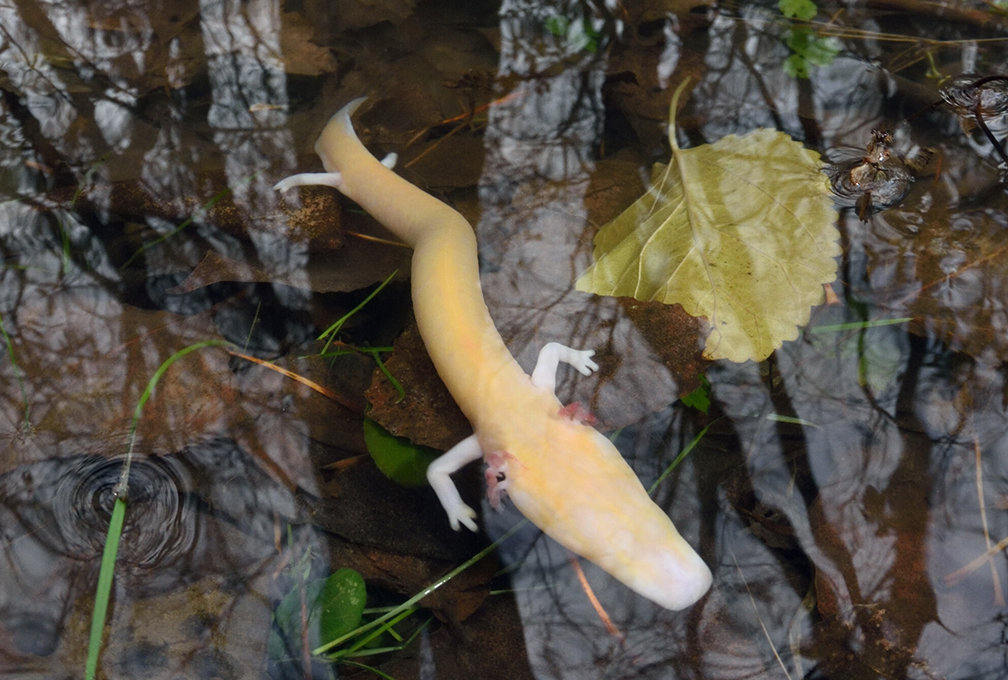Blind cave salamanders in Italy have shocked scientists by venturing out of their underground pools to the surface. Researchers have spotted the olms, as they’re called, poking their heads out of springs in northeastern Italy.
Olms are bizarre-looking creatures that live in a few cave systems in Italy, Slovenia, Croatia, and Bosnia and Herzegovina. It is not hard to see why a Slovenian naturalist in the 17th century called them baby dragons. After evolving in near-complete darkness, they are deathly pale and eyeless. They are born with eyes, but by the time they reach adulthood, their eyes are covered with skin.
The amphibians rely on an exceptional sense of smell and hearing to survive underground. They navigate by detecting chemicals in the water and using magnetic fields.
This discovery is so surprising because it goes against what scientists knew of the olms’ behaviors and troglomorphisms (traits that allow them to survive underground). To conserve energy, they tend to move as little as possible. One in the Balkans was motionless for seven years. So for them to suddenly rise to the surface is completely unexpected.
Not flooded out
In 2020, a group of ecologists saw one swimming in an above-ground spring. They had no idea what to make of the situation. Olms had occasionally been seen above ground before. The assumption was always that a flood had washed them out of their caves. That was not the case here.
Intrigued, the team began monitoring 10 cave systems and 69 different above-ground springs in the region. Unbelievably, olms surfaced regularly in 15 of them, even during the day. There had been no recent flooding, and the little salamanders seemed to be surfacing out of choice. In one spring, the amphibians were present a staggering 64% of the time.
In underground caves, the olms are apex predators, but on the surface, they make an easy target. Not only are they blind but their ghostly white skin means they stand out easily.
To try and figure out why so many come above ground, researchers captured and marked some. This led to an accidental discovery. A few inadvertently gulped in air, which made them float so they couldn’t swim properly. To fix this, the researchers massaged their stomachs to make them burp. Some didn’t just burp out air, they threw up earthworms. Specifically, earthworms that are not found underground.
So the olms seem to surface to hunt. The usually motionless salamanders expend a lot of energy to get to the surface, and the worms may be their reward. Lead author Raoul Manenti noted that some of the normally slender amphibians were “downright plump.”






